courses
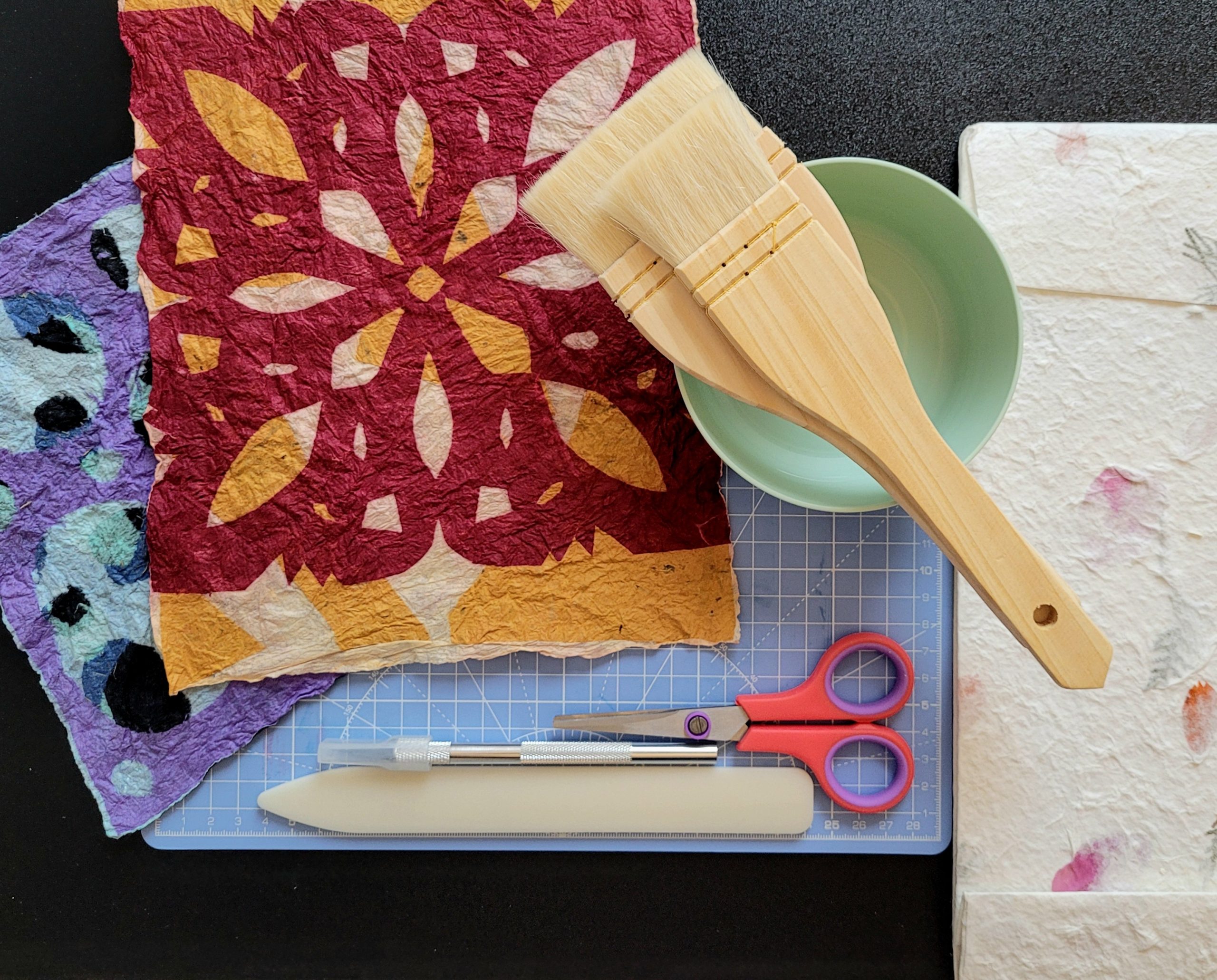
Joomchi
Joomchi is a traditional Korean art form that involves the manipulation and felting of Hanji, a type of handmade paper made from mulberry bark. By repeatedly wetting, layering, and agitating the paper, artists create textured, durable, and often translucent sheets that can be sculpted into various forms. Joomchi is celebrated for its organic textures, unique patterns, and the interplay of strength and delicacy. Historically used for functional purposes, it has evolved into a versatile medium for contemporary art, blending cultural heritage with modern creativity.
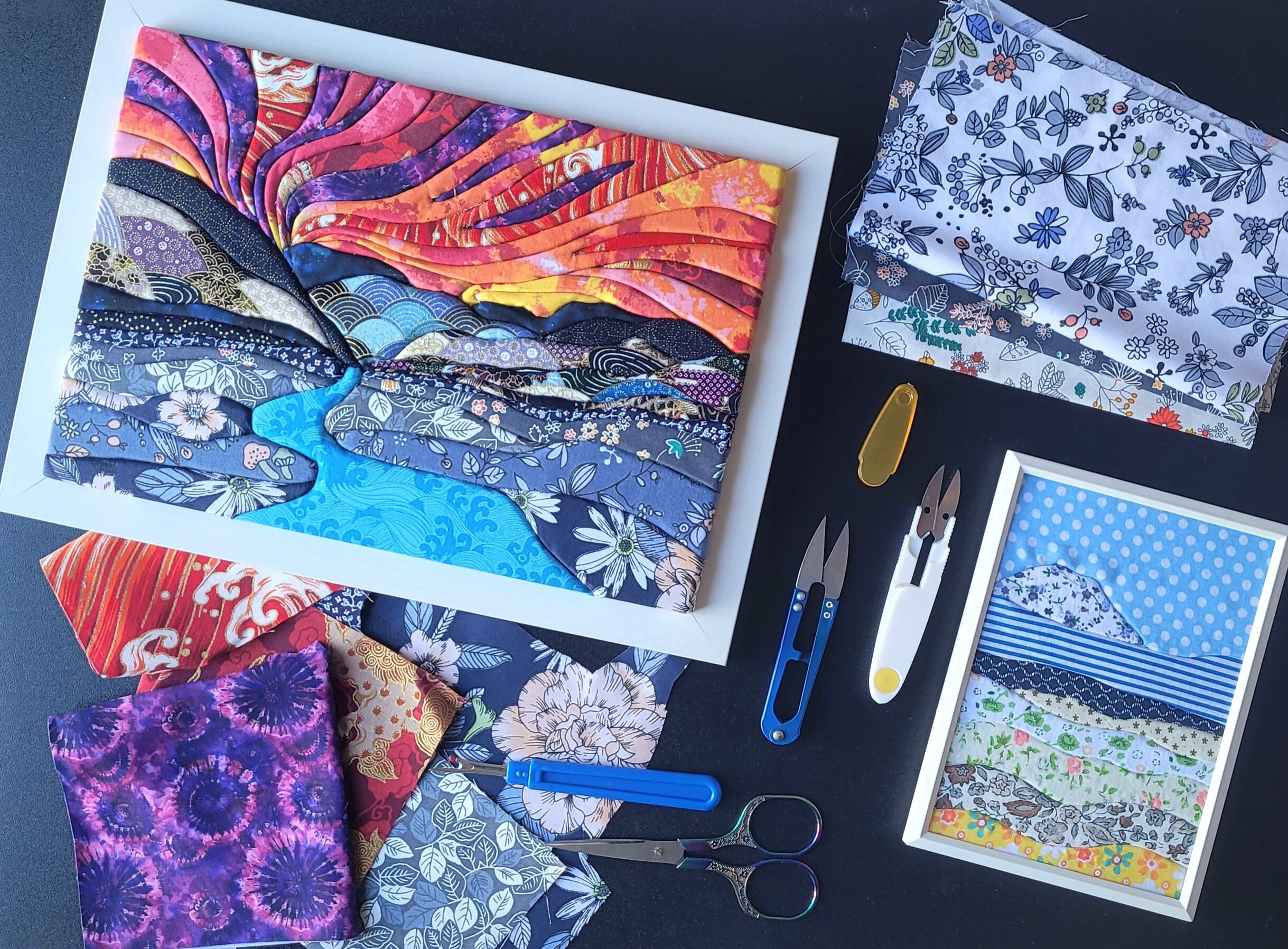
Kinusaiga is a traditional Japanese art form that transforms discarded silk scraps into intricate, quilt-like images without the use of needles or thread. By carefully fitting small pieces of fabric into grooves carved on styrofoam board, artists create detailed, textured compositions that resemble paintings. Kinusaiga is admired for its delicate craftsmanship, vibrant colors, and the harmonious interplay of texture and pattern. It has evolved into a refined artistic expression, blending cultural tradition with contemporary creativity.
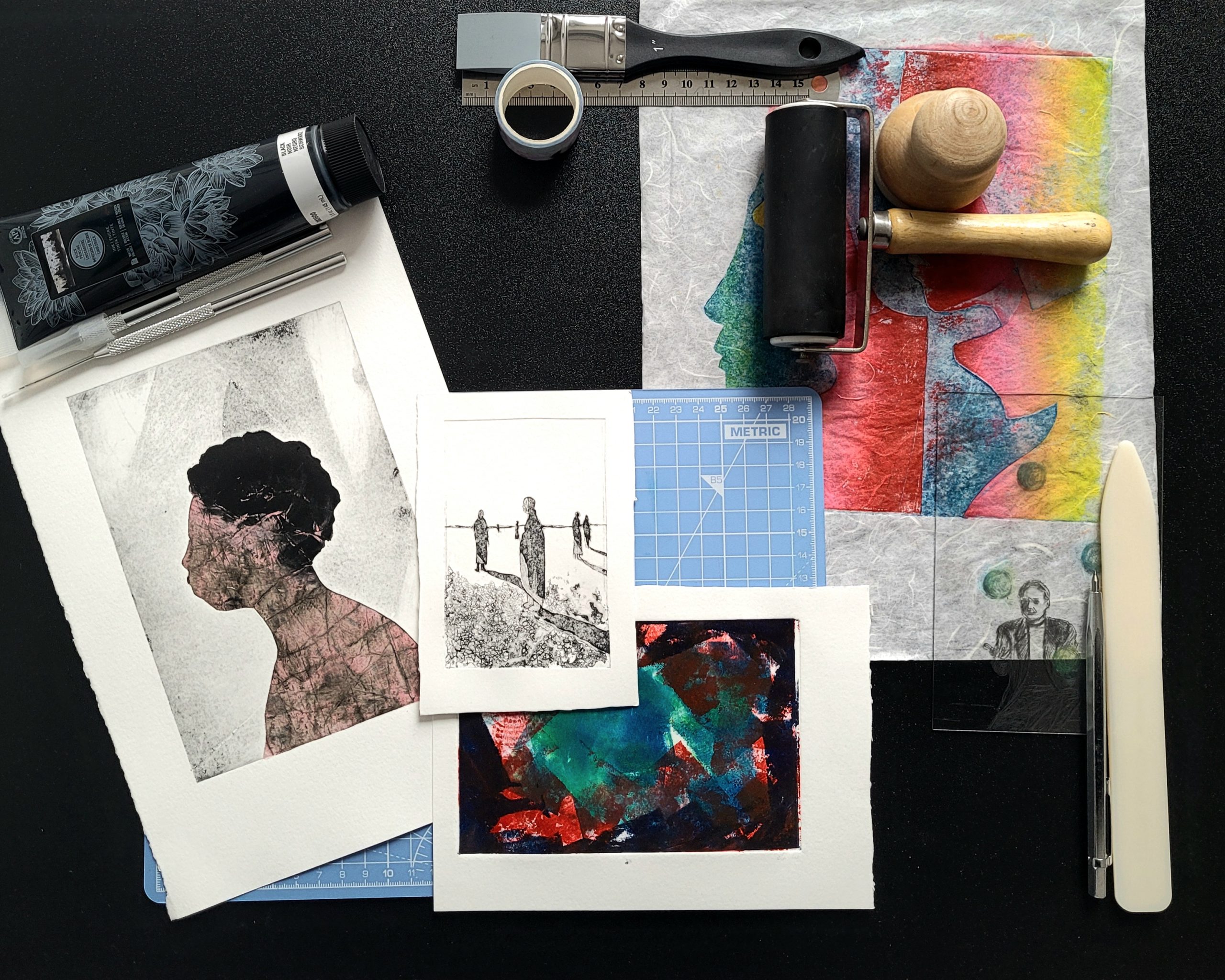
Intaglio
Intaglio is a printmaking technique where an image is incised into a surface, typically a metal plate. The incised lines or grooves are filled with ink, and then the surface is wiped clean, leaving ink only in the recessed areas. When paper is pressed onto the plate, the ink transfers, creating a print. This method allows for fine, detailed images and has been widely used in art and currency production. Intaglio encompasses various techniques, including engraving, etching, and drypoint, each offering distinct textures and line qualities.
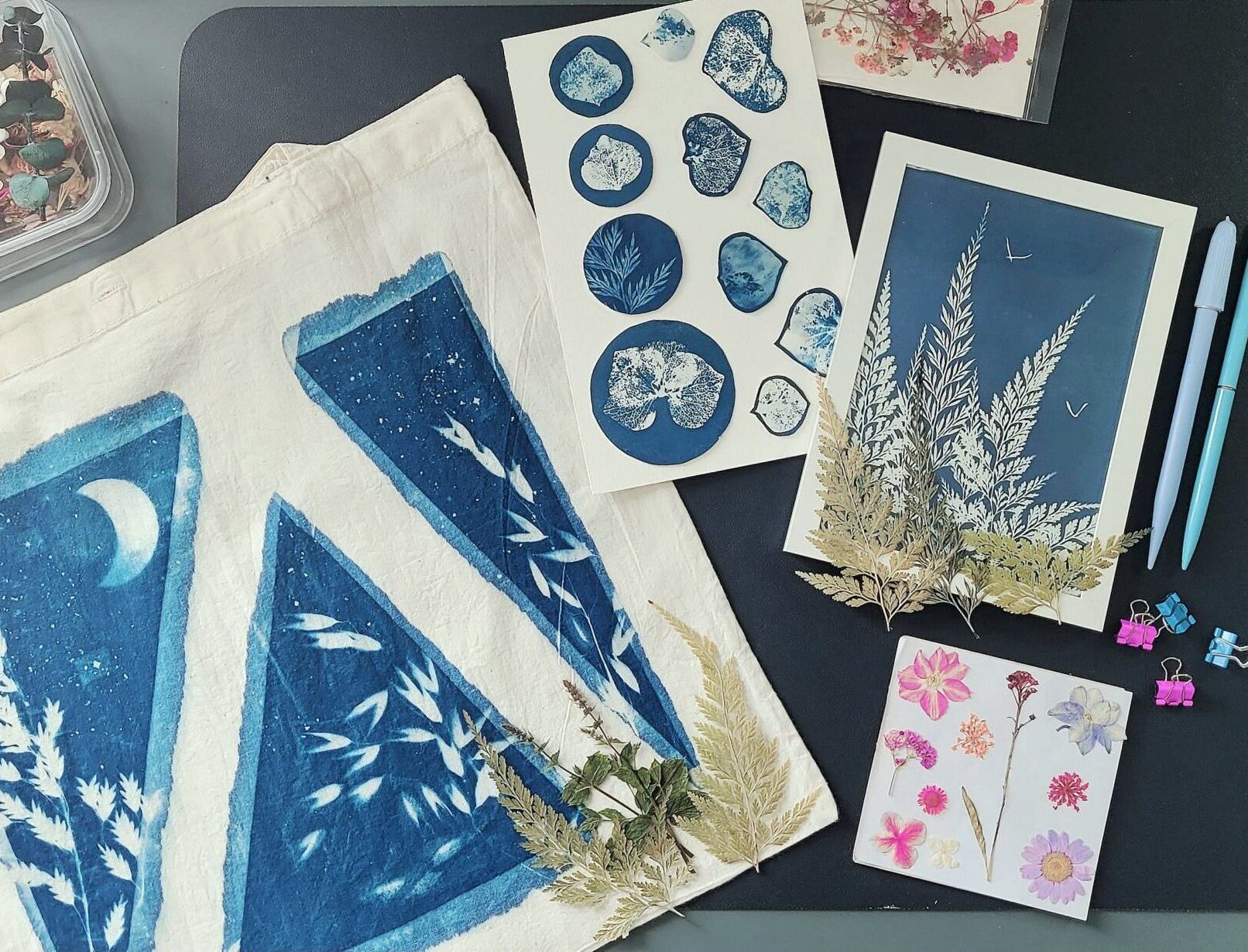
Cyanotype
Cyanotype is a historic photographic printing process known for its rich, blue-toned images and distinctive aesthetic. Developed in the 19th century, it involves coating a surface, paper or fabric, with a light-sensitive solution, placing objects or negatives on top, and exposing the composition to ultraviolet light. Once rinsed with water, the exposed areas develop a deep Prussian blue, while covered sections remain white. Originally used for scientific documentation, including botanical studies and architectural blueprints, cyanotype has evolved into a beloved medium for contemporary artists.
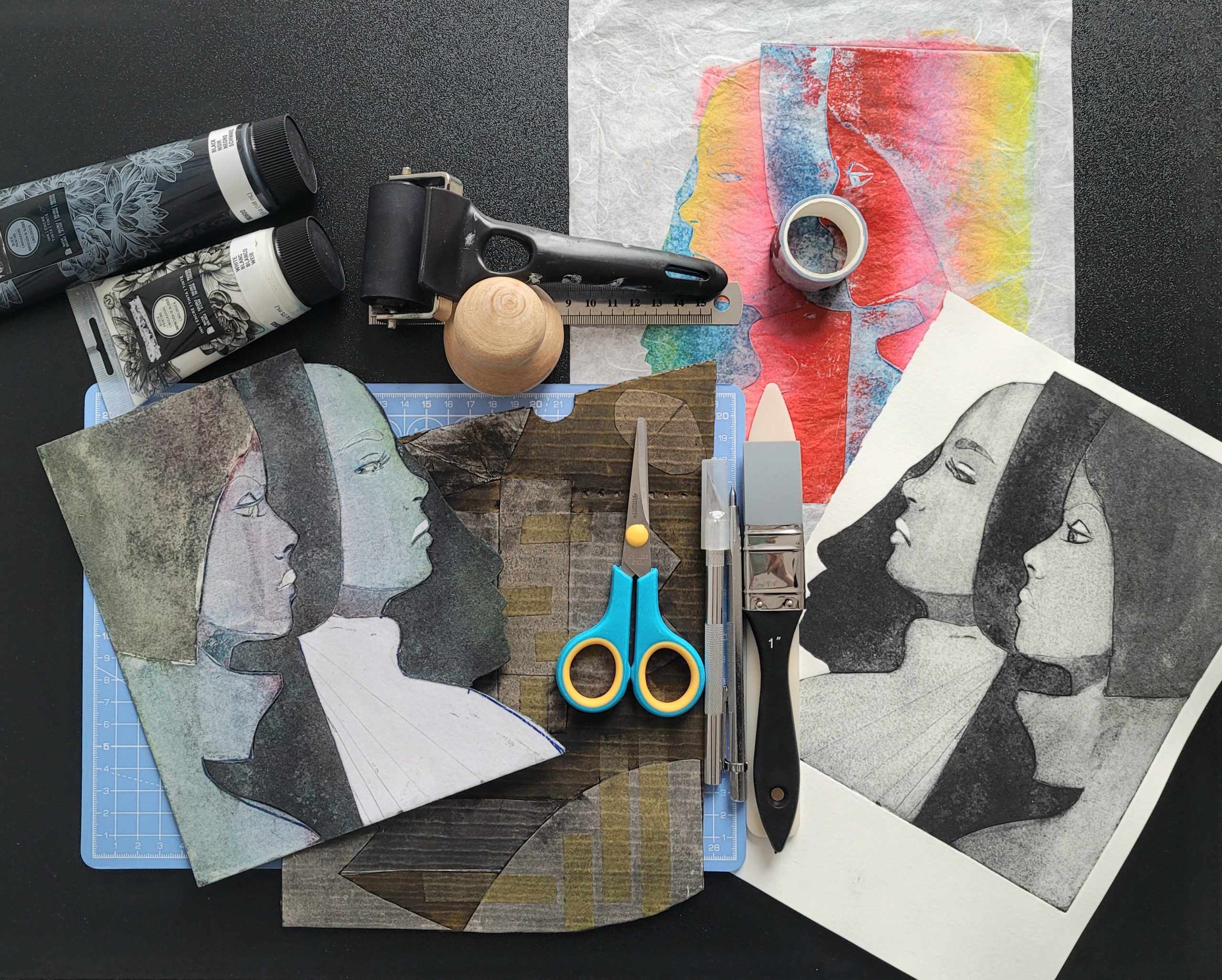
Collagraph
Collagraph is a printmaking technique where the printing plate is created by collaging different materials onto a base, such as cardboard or wood. The materials, which can include fabric, paper, or natural textures like leaves, are glued to the surface to create varied textures and reliefs. The plate is then inked, either by applying ink to the raised areas or filling the recessed ones, and pressed onto paper to produce a print. Collagraphy allows for a wide range of textures and is known for its rich, tactile surfaces and experimental nature.
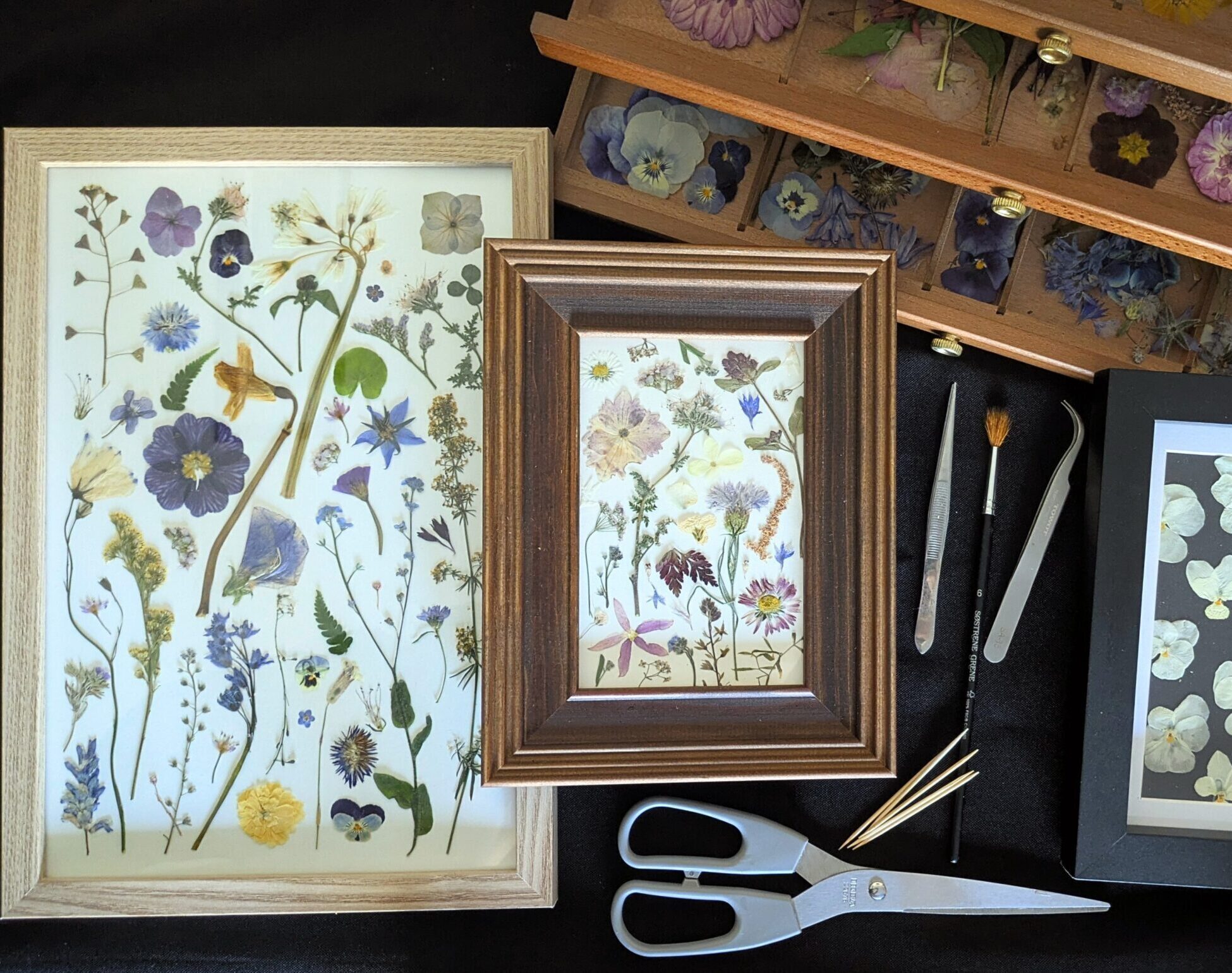
Botanical Collage
The flower pressing tradition began in ancient China and Japan, where botanists and artists pressed flowers for study and decoration. By the 16th–17th century, European explorers and herbalists used pressing techniques to create detailed botanical records. In the Victorian era, flower pressing became a popular craft and sentimental art form, with people creating framed arrangements and keepsakes.
Why Love Art
We love art because it is a powerful expression of emotion, imagination, and culture. It connects people across time and space, allowing us to share experiences and ideas in ways that words alone cannot. Art inspires creativity, invites reflection, and provides a unique lens through which to see the world. It enriches life by adding beauty, meaning, and a deeper understanding of the human experience.
